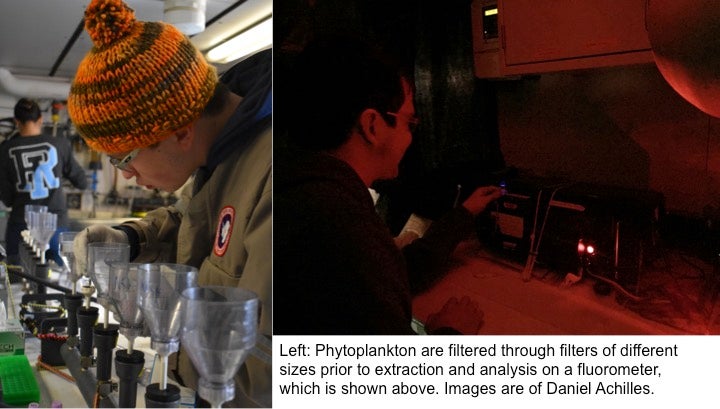The focus on this cruise has been phytoplankton, and one of their identifying features is the presence of chlorophyll. The very same pigment that makes the plants you see outside a bright green. Therefore, measuring the amount of chlorophyll fluorescence gives us a sense of the abundance of this phytoplankton in the water. Measuring chlorophyll fluorescence is one of the tasks we perform for every station on this cruise. Phytoplankton in the water column are found in many different sizes and shapes. We are able to separate phytoplankton by size by filtering water through different sized filters. We use microscopes and the Flow Cam(see earlier post) in order to identify the particular species, but a reading of chlorophyll fluorescence is very useful to determine phytoplankton abundance. First off, we obtain water from the niskin bottles of the CTD and then we separate plankton communities through different size filters. Then, the filters are placed in ethanol for 12 hours during which the chlorophyll is extracted into the ethanol. That extract is then read in the fluorometer. The fluorometer shines a blue light on these tubes, where the chlorophyll molecules are excited and fluoresce a red light back, which is then measured. However, chlorophyll is a light sensitive pigment. So, on board the ship we have set up a dark room in which we have spent countless hours analyzing chlorophyll. This data, along with other elements that are being recorded is allowing us to see the bigger picture of phytoplankton communities and their distribution in the Southern Ocean. We have plenty of stations left to collect more of this data and illustrate these distribution patterns across our cruise track. Stay tuned to the blog for an update on this fluorescence data, as well as the rest of what is going on aboard the ship. Posted by: Daniel Achilles

